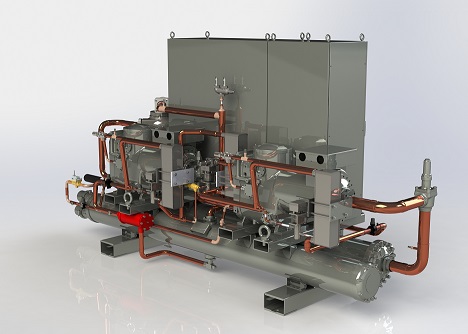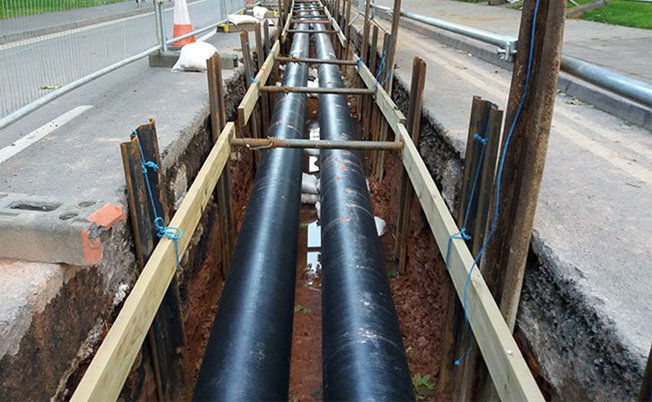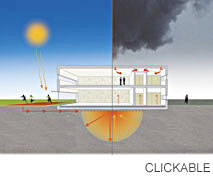
Westminster Energy, Environment & Transport Forum
Heat Networks:
Priorities for decarbonisation, innovation and efficiency
Tuesday 29 January 2019
Royal Over-Seas League, St James's, London SW1A 1LR
Westminster Forum attracted a number of distinguished speakers on Heat Networks, including:
- Dr Joanne Wade, Chief Executive, Association for Conservation of Energy
- James Lambert, Competition and Markets Authority
- Nick Churchward, Burges Salmon
- Frances Warburton, Ofgem
- Rachel Mills, Southern Housing
- Bindi Patel, Heat Trust
- Jody Pittaway, SSE
- Stephen Cook, Arup
- Mike Reynolds, MD, Vattenfall Heat UK
- Nick Gosling, Vital Energi
- Ken Hunnisett, Triple Point Heat Networks Investment Management
- Edward Thompson, Director, ICAX
- Emma Floyd, Heat Networks Investment Project, BEIS
Transcript of the presentation given by Edward Thompson on Fifth Generation Heat Networks
Hello, I’m Edward Thompson from ICAX Ltd. ICAX specialises in designing and delivering zero carbon heating and cooling systems, including Fifth Generation District Heat Networks.
Fifth Generation District heat networks have many advantages, including:
- reducing installation costs
- reducing running costs
- elimination of on-site carbon emissions (because they don’t use combustion)
- elimination of NOx, SOx and particulates (because they don’t use combustion)
- and they allow modular expansion of networks
They can also provide cooling, as well as heating, from the same network.
A Fifth Generation Network uses an ambient ground temperature distribution circuit. Each building on the network uses a heat pump in its plant room to transfer heat into the building when it needs heating, and to transfer heat out of the building when it needs cooling.
Providing cooling by heat transfer with cold ground water is much cheaper than exchange with hot air as is conventionally done with a chiller on the roof in summer. Providing cooling increases the temperature in the district circuit for the benefit of those who need heating.
Providing heating by heat transfer from the groundwater is much more efficient than heat exchange with cold air, like an air source heat pump. Providing heating of course reduces the temperature in the network circuit, which is of benefit for those on the circuit who need cooling.

A Fifth Generation circuit is therefore effectively a heat sharing circuit, a Heat Sharing Network. Both those needing heating and those needing cooling benefit from a “heat sharing dividend”.
If all buildings on the network need heating at the same time and the temperature in the circuit falls, the circuit can absorb heat from a borehole ground array or a water source such as the London Aquifer, an excellent source under all our feet.
Vice versa, of course, if buildings need cooling, as they are likely all to do in summer.
A Fifth Generation Heat Network suits all kinds of buildings of different styles and different eras.
A modern building can be heated very efficiently with heat pumps providing temperatures at 40°C. For older buildings, using old fashioned heat distribution systems such as radiators, they will need high temperature heat pumps, such as you see on the screen. A high temperature heat pump can be employed to deliver heat up to 80°C, to avoid the need to refurbish the building internally, which would be hugely disruptive.

A Third Generation District Network was very expensive to install and usually involved inserting large diameter steel pipes into the roads, (such as you see on the right): an expensive bulky installation to reduce the heat losses to the ground, one of the big losses in district heating. In Fourth Generation Networks the move to lower distribution temperatures of around 65°C permitted smaller insulation, but still involved considerable disruption on installation.
A Fifth Generation circuit uses smaller diameter polymer pipes circulating water at ambient ground temperature. Now these slimmer pipes can be mounted on the side of buildings, as you can see on the right hand side. It is infinitely cheaper than digging up the road. Also, of course, digging up the road is rather hazardous because there are probably other services inside it and you risk causing major disruption.
A conventional fourth generation network requires space for a central energy centre – which burns fossil fuels and emits CO2 and oxides of nitrogen on site.
A Fifth Generation system needs no energy centre as each building uses a heat pump to manage its own heat needs and heat pumps emit nothing at all. So for decarbonisation, this is the way to go, nothing is emitted from heat pumps.
So this is a radically cheaper option, radically cheaper particularly in construction costs. The financing of Fifth Generation work is on a different scale with no need for the 13 lawyers in the room to pick over 25 year contracts and consider contingent risks that may appear in, say, 12 or 13 years’ time.
A Fifth Generation circuit can accommodate expansion in modular fashion – at marginal cost. There’s no need to redesign the central energy centre when a new building joins it, just extend the polymer piping and employ a suitable heat pump in the plant room of the new building.
A Fifth Generation circuit can also benefit from waste heat in the district, at any temperature above ambient ground temperature.
The first example of a Fifth Generation District Heat Network, the Balanced Energy Network, is installed and running beautifully at London South Bank University, in fact it’s in its second winter. CO2 emitted by the grid is 77% less than the CO2 that was previously emitted by gas boilers on site. This is a retrofit installation. That figure of 77% will improve as the grid decarbonises further.
There are really so many advantages of the Fifth Generation approach using ambient temperature networks, that I can’t condense them in just the five minutes that I’ve been allocated. However, you can Google for “Fifth Generation District Heating Networks” and get the full story, which includes benefits such as demand side response and thermal energy storage.
The central message is that you can now afford heat networks. Decarbonised heating and cooling is available now, and this, I believe, is what you’ve all come here today to hear about.
ICAX is ready to help you, Arup, Vattenfall, Vital Energi, BEIS, Emma Floyd, HNIP and everybody else.
We are here to help the UK save money, save carbon and save the health of the nation.
See presentation slides for Fifth Generation Heat Networks
Full programme details and booking forms can be found at Westminster Forum for future seminars organised by the Westminster Forum.
See Ground Source Heating See Ground Source Cooling See Ground Source Energy
See also: How ground source heat pumps work
See also: Fifth Generation District Heat Networks

